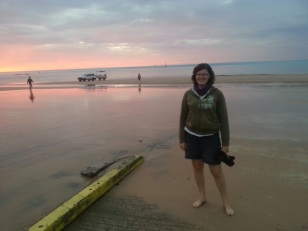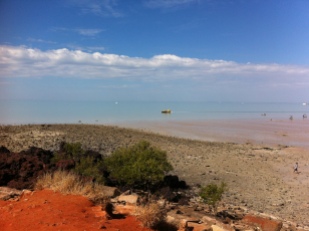I’m now safely home after attending the Society for Marine Mammalogy’s biennial conference in Halifax, Nova Scotia. It was an amazing eight days of conference talks and workshops, interspersed with plenty of networking. As well as meeting lots of interesting new people, it was particularly wonderful to catch up with so many old friends. Totally worth the 35hrs of one-way travel and 12hr time difference jetlag!
I’m currently preparing a detailed conference report for the Journal of Animal Ecology’s blog, but in the meantime I wanted to make my conference presentation available online. To download a PDF version, click here. The full abstract is provided below. Feedback welcome!

Acoustic habitats and behavioural responses of bottlenose dolphins in Western Australia
Marley, S.A., Salgado Kent, C.P., Erbe, C., Parnum, I.M. and Parsons, M.J.G.
As human activities continue to expand across the marine environment, anthropogenic ocean noise is also rapidly increasing. This is of concern to acoustically-specialised species, particularly those displaying a high degree of habitat overlap with anthropogenic activities, such as bottlenose dolphins (Tursiops sp.). There is a need to describe the soundscape of coastal dolphin habitats and examine how prominent anthropogenic noise sources may impact these animals. The Swan River in Western Australia flows through the state capital of Perth, containing over 1.4 million people, and consequently experiences a range of anthropogenic activities. However, the river is also extensively used by a resident community of Indo-Pacific bottlenose dolphins (T. aduncus). Autonomous underwater acoustic recorders were used to collect data throughout the Swan River, which were analysed via weekly spectrograms, power spectrum density percentile plots, octave-band levels, broadband noise levels, and generalised estimating equations. Land-based theodolite tracking at two sites provided information on vessel traffic and dolphin behaviour, which were assessed using generalised additive models and Markov chains. Acoustic datasets collected from 2005 to 2015 indicated that the Swan River was comprised of multiple acoustic habitats, each with its own characteristic soundscape and temporal patterns in underwater noise. The ‘noisiest’ site from an anthropogenic perspective and in relation to dolphin communications was the Fremantle Inner Harbour (mean broadband noise level: 106 dB re 1 µPa rms [10 Hz – 11 kHz]). Theodolite tracking at this site found that dolphins remained present during periods of high vessel traffic. However, behavioural observations indicated significant alterations to dolphin movement speeds and activity states at high vessel densities. Furthermore, whistle characteristics varied in conditions of high broadband noise. This work suggests that dolphins maintain occupancy at key foraging sites within the Swan River despite the presence of vessels, but alter their behaviour in periods of high vessel traffic.








